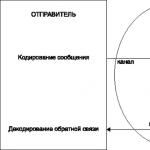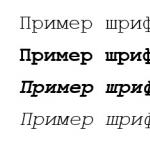Solstice - 1 of 2 days of the year when the Sun is at its greatest angular distance from the celestial equator, i.e. when the height of the sun above the horizon at noon is minimum or maximum. This leads to the long day and the shortest night (summer solstice) in one hemisphere of the Earth and to the shortest day and longest night (winter solstice) in the other.
At the time of the summer solstice, the ancient Slavs celebrated Kupala Day (Kupalo or Kupala - the God of earthly joys). Therefore, even now, for many people, the solstice holiday is associated with pagan rites of worship of the forces of nature and spirits, in particular, with worship of the Sun and divination.
Kupala traditions include rituals such as collecting medicinal herbs, lighting fires, bathing or dousing with water, fortune-telling, and festive treats.
According to Christian tradition, this holiday is celebrated 2 weeks later - Ivan's Day, Ivan Kupala's Day (John the Baptist).
Signs on the day of the summer solstice:
If on this day you climb over 12 fences, then your wish will come true within a year.
To get rid of all diseases, you need to take a steam bath with a broom collected on that day.
Children born on the day of the summer solstice, June 21 or 22, have an evil eye, that is, they can jinx it. According to another sign, these people have good health and a happy fate, as they are under the protection of the sun.
Bad weather at the summer solstice predicts crop failure and a poor year.
If the Sun hides behind clouds, the summer will be bad.
If there is a lot of dew in the morning - to a rich harvest. This dew was collected and poured into one vessel, it was considered healing. The same power was possessed by the water collected in the morning from wells and springs. They washed themselves with it on the same day and drank.
If there are a lot of stars in the sky, this is a mushroom summer.
In order to meet the day of the solar solstice, and therefore the astronomical summer itself, you need to read this article carefully. In it, we tried to collect the maximum number of necessary rituals and traditions, which since ancient times met the longest daylight hours. For Russians, this day will come at 6:24 Moscow time on June 22.
The ritual for the correct meeting of the summer solstice is quite simple. To do this, you need to wake up before dawn, which, as we have already said, will come at 06:24 Moscow time. You should also prepare your home by opening all the windows to the morning sun to let in its first rays.
As soon as the entire solar disk appears from behind the horizon, it is necessary to stand at the open window on the east side with open arms and greet him with gentle words.
Magic, customs, divination and rituals
Among the Slavs, the summer solstice was considered the most powerful day of the year, when the gods fulfill any desire, and plants are endowed with the power to cure any disease. Healers and herbalists stocked up on this day with medicinal herbs for the whole next year.
In folk beliefs from all plants special place occupied by a fern. It was believed that on this day, at the moments of the solstice, the fern blossoms and blooms - and everyone who can pick a fern flower will be endowed with powerful power.
But, as the legends say, it is extremely difficult and dangerous to find a fern flower, because it is reliably guarded by the spirits of the forest, capable of straying the daredevils in the wilds and taking away the gift of speech. So they went to look for a magic flower on Kupala night not only because of its magical properties but also in order to test courage.
In addition to herbs on the day of the solstice, the elements of fire and water also possessed special power. It was believed that bathing on the day of Semiyarila heals a person from illnesses and charges him with the energy of the Sun. According to legend, magical power begins to grow after 23 hours on the eve of Kupala night, reaches a peak at the time of the solstice and is valid until noon on June 22.
In order to direct the magical power of magical time for their own good, our ancestors performed special rituals. They collected spicy herbs: mint, angelica, thyme - slightly withered them at sunset, and then, at midnight, kindled fires, alternately threw herbs into the fire and guessed.
If smoke spread along the ground - in the near future, a person faced the threat of illness and failure, rose up - happiness and health awaited him. Then they surrounded the fire with birch branches to protect themselves from demons, and made a sacrifice to the goddess Dana - they lowered flowers into the water and, stripped naked, jumped into the river.
The summer solstice was considered the most successful day for a wedding. Family unions that were concluded on this day turned out to be the strongest and most faithful. Children in such families grew up healthy and beautiful.
Modern astrologers confirm this popular belief - after all, the Sun on the night of June 21-22, the Sun passes into the zodiac sign of Cancer, which symbolizes the family, procreation and the preservation of traditions.
Many customs and traditions of the Slavic holiday of Kupala echo the Christian day of the Holy Trinity. So, on this holiday, it was customary for the Slavs to decorate their home with birch branches and medicinal herbs - St. John's wort, elecampane, Ivan da Marya. Our ancestors believed that these plants attract good spirits to the house.
On the night of the summer solstice, young boys and girls walked through the forest, lit fires and jumped over them. It was believed that this ritual protects against disease, famine and war. The cooled coals were collected and stored all year long, healing ulcers and wounds with them.
Signs
The water that was collected on the morning of June 21 is considered healing. Water was collected from wells and springs, washed with it on the same day and drank.
The girl who danced all night on Ivan Kupala at nine bonfires will certainly get married this year.
If on the day of the solstice a bouquet of Ivan da Marya is hung at the entrance to the house, then all sorrows and misfortunes will bypass the house.
Rain on the holiday of the Solstice was considered a bad omen. They thought that the gods were angry, and did not allow to kindle fires and conduct rituals for well-being.
So that evil spirits do not enter the house on the Kupala night, it is necessary to put or stick a prickly or burning plant in the door and window jambs, as well as under the threshold - nettle, branches of wild rose, raspberries, blackberries, etc.
Abundant dew on the morning of June 21 promised a rich harvest. It was collected and given to sick children for a year.
The clear starry sky on Ivan Kupala portends a warm but rainy autumn.
In the evening of Ivan's Day, they always went to the bathhouse and steamed with the herbal broom collected that day.
After such steaming, even seriously ill people were cured.
Those whose birthday fell on the day of the summer solstice, June 21 or 22, have magical powers and can heal people.
If on a Kupala night a man accidentally or deliberately pours water on you, you should be husband and wife with him.
A couple in love must, holding hands, jump over the Kupala bonfire on the day of the summer solstice, then they will definitely live a long time. happy life together.
Coals from Kupala bonfires are collected and laid out around the house, in the garden, put on the roofs. It is believed that they protect the economy from pests, thieves and fires.
summer solstice divination
The summer solstice is celebrated annually on June 22. On the night of June 21-22, we can observe the longest day and the shortest night of the year. Since ancient times, this day was considered magical and was of great importance for people.
On the day of the summer solstice, it is customary to guess, perform customs and rituals.
Divination for the future on the day of the summer solstice
Guessing this day exclusively on the street. Girls and young people found out their fate and wondered about love. The most common divination was divination at the stake. Boys and girls, holding hands, jumped over the fire.
If the hands were separated in a jump, the couple will not be together.
If the hands are together during the jump, the young are waiting for marriage.
If sparks flew after, passionate love awaits.
If the fire goes out during the jump - do not be a couple together.
They told fortunes at the stake and one by one. Whoever jumps higher over the fire will be happy this year. The one who touched the flame of a fire with his foot or hand will be tormented all year.
Modern magic and divination
For those who work on self-development, this day is very important, it is best suited for the programming of the future. On the day of the summer solstice, solar energy intensifies and the potential for magic, rituals and meditation increases dramatically.
This is one of the most powerful days of the year, when it is possible to "dream" your happiness and "program" yourself for positive and joy. Therefore, the minimum program for this day is to set yourself up for a positive wave from the very morning and not miss it until the sunset.
So, what opportunities does this day present to us, and what can we do to improve our well-being, personal life, career, health. Divination on the day and night of the summer solstice is much more accurate. Divination with Runes and Tarot cards is especially suitable.
On the eve of the summer solstice, love works much better. magic spells. Collect seven different herbs, flowers and sew into an amulet. Flowers of calendula, lavender, rosemary, sunflower, fern, verbena, oak and rowan tend to attract love on this day. The traditional magical colors of the day are yellow and red.
This is a good day to start the healing work because the Sun is an esoteric healer. It is on this day that herbs for magic should be collected, especially those used for solar magic, fire magic and for healing.
Wormwood, burdock, St. John's wort, mistletoe, dill, parsley, green onion, thyme, honeysuckle, nettle, collected on this day, have a powerful healing power. For example, nettle, burdock and dill are used at home to protect against evil.
On the day of the summer solstice, you can perform a ritual to protect the house. For this you will need: a rowan branch, red fabric and red threads. You can also use stones that have protective properties, for example, agate or turquoise, protective herbs: St. John's wort, honeysuckle, anise. Put it all in a red cloth, wrap it up and tie it with red thread.
In this case, you need to say these words:
"As rowan is tied in red, so protection surrounds my house"
Each time you say these words, add one knot on the red thread. Place your protective amulet somewhere safe in or near your home. The same amulet can be made to protect your car.
IN modern world the days of the solstices have lost the importance that they had for people in the past, and today they do not attract much attention. The only people who really care about this are the farmers and some modern pagans for whom these days are important.
The longest day in 2019 (as in other years) falls in the middle of natural summer - on the day of the summer solstice. Its date depending on shifts in the calendar caused by leap years falls on June 21-22. In 2019, the longest day will be on 21st of June and will last 17.5 hours, and the night will be the shortest of the year.
What happens on the summer solstice?
The solstice has been known for a very long time. Even in ancient Egypt, the construction of the pyramids took place taking into account the location of the Sun. So what happens on Earth on the day of the summer solstice? In the middle latitudes, from the beginning of spring, the Sun begins its celestial ascent, rising higher and higher, adding more and more daylight hours to us. The day when the star reaches its highest point is called the summer solstice. For several days of this astronomical event, the Sun is practically located in one place, being at noon at the same height.
Therefore, for some time the length of daylight hours does not change. Scientists called this phenomenon the solstice. At this time, the sun does not set above the horizon above 66.6 degrees, resulting in the longest daylight hours and the shortest night in the Northern Hemisphere of the planet. At the same time in southern hemisphere the longest night and the shortest day come and the astronomical winter begins. After the Summer Solstice in our latitudes, the sun begins to gradually decrease lower and lower, the days become shorter and the nights longer until the moment winter solstice. So, every year, due to a change in the height of the sun, a change of seasons occurs.
How was the summer solstice celebrated in Russia

In the old days, when people worshiped pagan gods, the Sun was considered the most powerful God, having power over all life on earth. On the Solstice Day in our hemisphere, the flowering of nature began, so people believed that this day was endowed with special magical powers. Long before the adoption of Christianity in Russia, this day was considered the beginning of summer and the feast of Ivan Kupala was celebrated.
The longest day in Ancient Russia they began to celebrate a week before its onset by commemorating the ancestors and honoring the spirits. People fluttered the ashes of the fallen and dead soldiers over the rivers and asked the spirits for a good harvest this year and a prosperous life. On the eve of the solstice, girls and women went to the forests and meadows to collect medicinal herbs. At a time when the day was the longest of the year and the night was the shortest, it was customary to stay up all night. People believed that when they fell asleep, they would bring all sorts of troubles and misfortunes upon themselves.
Before dusk, the girls wove wreaths and let them float on the water, guessing at the share. People bathed in the river, washing away all the sins accumulated over the year. After that, they had fun, sang songs, danced round dances, kindled bonfires, on which they burned an effigy and jumped over the fire, being cleansed of sins. According to the new style, Ivan Kupala Day is now celebrated from July 6 to 7, however, all the rites and traditions of the holiday went from the day of the summer solstice. When the solstice ended, the ancient Slavs celebrated the solstice and paid honors to the god Perun, who was one of the main Slavic gods.
Rites and Traditions of the Summer Solstice
From ancient times, the rites and traditions of the Summer Solstice have come down to our days. Many of our contemporaries believe that they have not lost their vitality and magic. They believe that on these days the energy of the sun reaches its enormous strength and gives a powerful charge for divination and programming fate for happy events, prosperity and good luck.
- Ritual for the fulfillment of desire. Make a wish on June 21st. To do this, go to the field and weave a wreath of wild flowers. Weaving it, you are in good mood and think about your wish. The wreath has long been considered a symbol of life, so put it on your head. Try to kindle a fire in nature and donate any of your things to it - a scarf, a purse, any item of clothing. Throwing a thing into the fire, say the word: “Paid!” - so you paid for making the wish come true.
- Ritual for money. To attract cash flow into your life and achieve abundance, you should take all the little things from your wallet on the day of the solstice and hide it under the threshold of a house or doorway front door. You will see how, after some time, money will begin to come to you from the most unexpected sources.

- A ritual for life change. If you want to radically change your life, for this, on the night of June 21, you need to turn over all possible objects in the apartment. Turn over light pieces of furniture: chairs, ottomans, coffee table. Place dishes upside down: cups, glasses, wine glasses, plates, pots and pans. Performing this rite, think that all life is in your hands, therefore, with the turning of objects, life begins to change. Having completed the ceremony, say: “The house is upside down, another life will begin with a new day!”. After that, go to sleep peacefully and in the morning return all things to the correct position.
- Ritual for the creation of a talisman. Amulets and talismans created on the day of the summer solstice have great energy and magical power. The most powerful amulet, which in ancient times was made on this day, was called the Witch's Staircase. They made it like this: they took a ribbon of golden or yellow color and nine multi-colored beads and then weaved an amulet, stringing beads on the ribbon. They started with a knot, then there was a bead, then a knot, after it a piece of tape and again a knot, and so on, until all the beads were strung, and the end of the amulet was fixed with a knot. While each bead was being strung, a new wish was made. This amulet was worn with them or hung near the door.
Summer Solstice for Modern Man
Nowadays, the summer solstice is not perceived as something divine. We accept it as an astronomical phenomenon associated with the definition of the seasons. However, we feel that the longest day of the year gives us a good boost of energy and optimism. Maybe that's why many peoples of the world celebrate the summer solstice in our century as the peak of summer and celebrate it using ancient pagan rituals that praise nature and fortitude.
The summer solstice in 2017 falls on June 21st. This day is considered the longest day of the year, when the height of the Sun's rise in the sky is the highest. The summer solstice is also called the first day of summer, since it is on this day that the summer season begins in the northern hemisphere of our planet according to astronomical laws.
In 2017, the summer solstice occurred at 04:24 UTC (04:24 Moscow time). On June 21, at the latitude of Moscow, the Sun will rise above the horizon to a height of more than 57 degrees, and in areas located above the latitude of 66.5 degrees (the Arctic Circle), it will not set below the horizon at all, as a result of which the day will last around the clock. At the South Pole at this time there is a polar night.
In ancient times, the summer solstice was timed to coincide with the Kupala holiday. According to tradition, on this day and night they wove wreaths, drank surya (honey drink), jumped over fires, made sacrifices to water and fire, collected healing herbs, performed rituals that called for the harvest, and also performed ablutions in rivers and lakes to wash the soul.
 blogspot.com
blogspot.com To date, the Kupala holiday does not correspond to the astronomical solar equinox, but many peoples celebrate the summer solstice in the old fashioned way. The summer solstice is also widely celebrated in the West. For example, in Britain the holiday is called Lita, it is closely connected with the pagan cult of the sun. The Scandinavian and Baltic peoples splendidly celebrate the day and night of the summer solstice, they are called Ivanov's day or Ivan's night. In Latvia, the holiday is called Ligo or Janov's Day, it has state status and is celebrated annually on June 23 and 24.
 zonatigra.ru
zonatigra.ru On the day of the summer solstice, according to popular beliefs, it is necessary to follow the signs. First of all, earlier they paid attention to the weather on this day - bad weather promised a crop failure and a cold summer. It is believed that people born during the summer solstice have good health and a happy fate, as they are under the protection of the sun.
Also among the important beliefs and signs on the summer solstice there are sentences and conspiracies. For example, if on this day you climb over 12 fences, then your wish will come true within a year. And in order to get rid of all diseases, you need to take a steam bath with a broom, collected on the day of the summer solstice.





